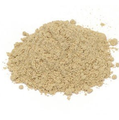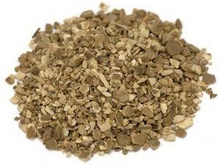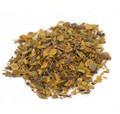 Loading... Please wait...
Loading... Please wait...- Home
- Bulk Herbs
- Herbs (O-P)
- Prickly Ash Bark
- Home
- Herbs - Organically Grown & Wild Crafted USA
- P Q
- Prickly Ash Bark
Product Description
Prickly Ash Bark
Wild Crafted - USA/Texas
Also Known As – Zanthoxylum spp (clava-herculis and americanum), Szechuan pepper, chuan jiao, Northern Prickly Ash, Ache Tree, Tooth Ache Tree, and Yellow Wood.
Overview - Prickly ash is an aromatic small tree with tiny greenish-yellow flowers and bipinnate leaves. Historically, this herb was used in the Imperial Court of China as an anesthetic for the procedure that gave the Emperor his court eunuchs. It is usually taken as herbal teas or tinctures, although there are other uses for it as well.
Medicinal Uses - Prickly Ash's traditional use was to stimulate the body when it was feeling sluggish and still today plays an important role in this manner. Eclectic physicians used it in a similar way to Cayenne, but suggested that it is slower acting and longer lasting. Prickly ash is a great addition to a formula when a tonifying and supportive alterative is needed to rejuvenate the body. Prickly ash is often used to support normal circulation of blood in its vessels due to its inherent stimulatory effect on the body. As a result, it is often used as a supportive aid when more blood is needed in a certain area of the body. Because it supports blood flow in the body, prickly ash is also used to promote healthy joints, particularly when there is stagnant lymph that needs to re-circulated to promote optimal levels of inflammation.
Internally, Prickly ash tincture can be taken for cholera, bowel diseases, syphilis, internal pain, typhus, pneumonia and typhoid. This herb is also taken for fever, hemorrhage and tuberculosis. The effecarkt of the herbal remedy is that it stimulates the production of saliva and strengthens the nervous system. Externally, Prickly ash bark can be chewed to relieve toothache. It can be used as a poultice with bear grease to treat sores and ulcers. The herbal tea was sprayed on the chest for bronchitis and congestion.
Other Uses – Prickly ash is also used as a homeopathic remedy to treat headache, hysteria, lactation, injured nerves, neuralgia, toothache, sciatica, ulcers, hemorrhages, dysmenorrheal, rheumatism, insomnia and occipital headache.
Herbs to Combine/Supplement - this herb can be combined with black cohosh to treat tinnitus. Mix it with buckbean, Guaiacum officinale and cayenne for rheumatism. Add it to angelica root or rosemary for circulatory problems. Combine prickly ash with ginger or Panax ginseng to treat chronic abdominal pain. Mix it with ginger for nausea and vomiting when recovering from a long illness. Add prickly ash to Oregon grape root to rid the body of roundworms.
Parts Used - Both the berries and the bark are used medicinally.
Precautions - This herb is contraindicated in pregnancy due to its stimulating properties. It should not be used by nursing women, and individuals with severe inflammation of the digestive system, or ulcers.
Suggested Preparation and Dosage - If you are using a commercial preparation, take it according to the directions on the label. To make an infusion, pour a cup of boiling water over 1 to 2 teaspoons of bark and let it steep for 10 to 15 minutes. Strain and drink three times per day.
- For a tincture, take 2 to 4 ml three times per day. For toothache, chew the dried bark.
- Prickly ash oil and plasters are also used on occasion. Oil is made by putting berries in bottles and then filling the bottles with grain alcohol. Evaporate the alcohol and what remains is the oil. Plasters are made by putting a thin coat of honey on a cloth and then sprinkling powdered prickly ash on top. Tape this plaster over the area to be treated.
Disclaimer - The information presented herein by Mountain Maus’ Remedies is intended for educational purposes only. These statements have not been evaluated by the FDA and are not intended to diagnose, cure, treat or prevent disease. Individual results may vary, and before using any supplements, it is always advisable to consult with your own health care provider.















